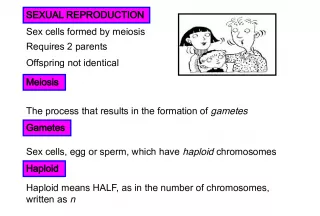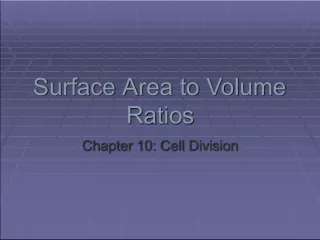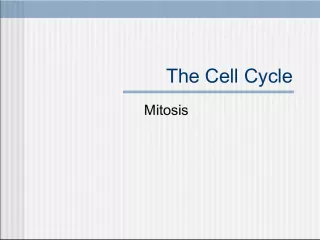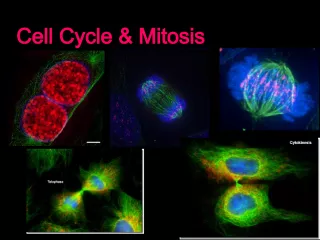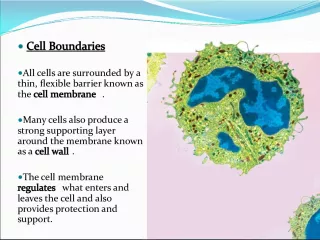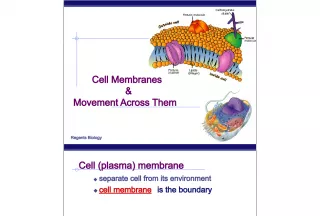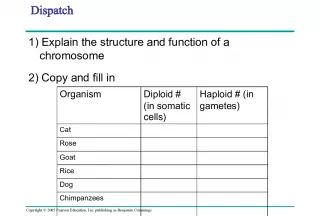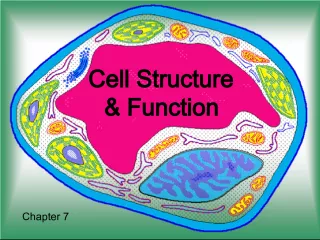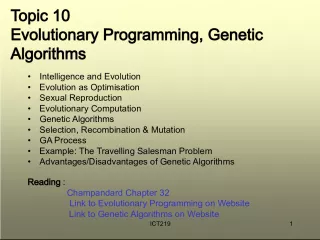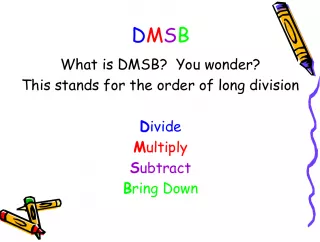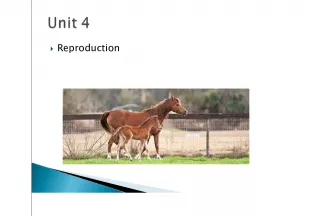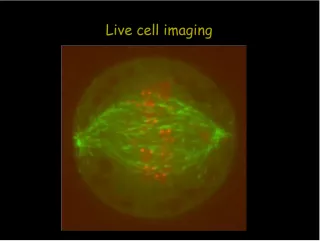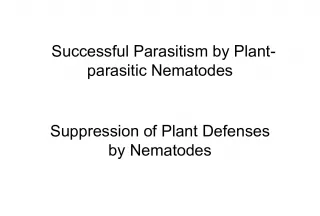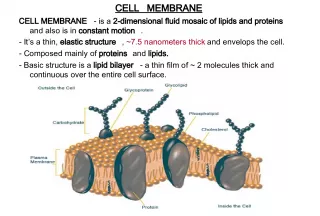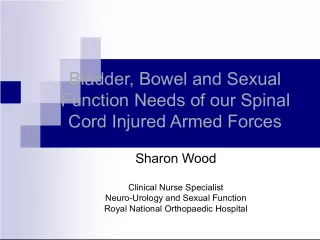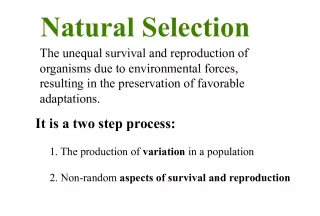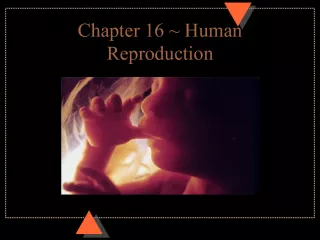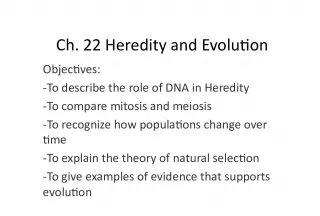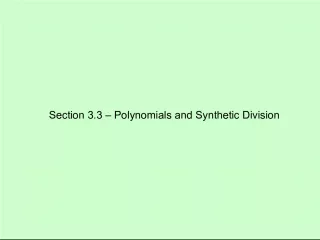Meiosis and Sexual Reproduction in Cell Division
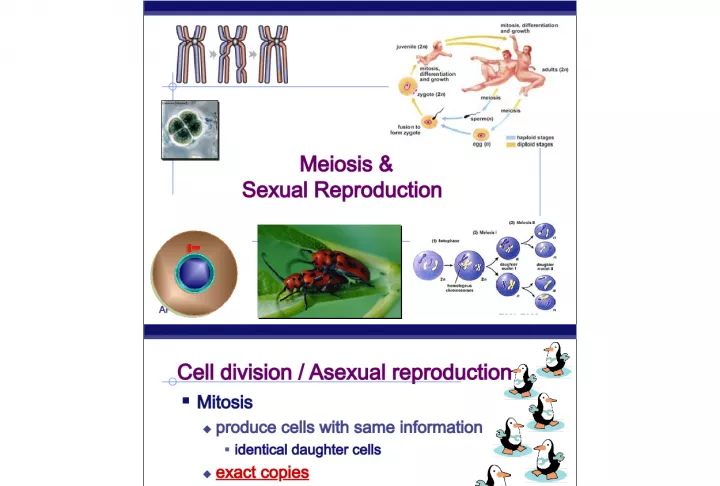

This article discusses the different methods of cell division, including asexual reproduction through mitosis and sexual reproduction through meiosis. Mitosis produces identical daughter cells with the same DNA and genetic
- Uploaded on | 2 Views
-
 floyddavis
floyddavis
About Meiosis and Sexual Reproduction in Cell Division
PowerPoint presentation about 'Meiosis and Sexual Reproduction in Cell Division'. This presentation describes the topic on This article discusses the different methods of cell division, including asexual reproduction through mitosis and sexual reproduction through meiosis. Mitosis produces identical daughter cells with the same DNA and genetic. The key topics included in this slideshow are . Download this presentation absolutely free.
Presentation Transcript
Slide1AP Biology2007-2008 Meiosis & Sexual Reproduction
Slide2AP BiologyCell division / Asexual reproduction Mitosis produce cells with same information identical daughter cells exact copies clones same amount of DNA same number of chromosomes same genetic information Aaaargh! I ’ m seeing double!
Slide3AP BiologyAsexual reproduction Single-celled eukaryotes yeast (fungi) Protists Paramecium Amoeba Simple multicellular eukaryotes Hydra What are the disadvantages of asexual reproduction? What are the advantages? budding budding
Slide4AP BiologyHow about the rest of us? What if a complex multicellular organism (like us) wants to reproduce? joining of egg + sperm Do we make egg & sperm by mitosis? 46 46 + 92 egg sperm zygote What if we did, then…. Doesn’t work! No!
Slide5AP BiologyHuman female karyotype 46 chromosomes 23 pairs
Slide6AP BiologyHuman male karyotype 46 chromosomes 23 pairs
Slide7AP BiologyHomologous chromosomes Paired chromosomes both chromosomes of a pair carry “matching” genes control same inherited characters homo logous = same information diploid 2n 2n = 4 single stranded homologous chromosomes double stranded homologous chromosomes
Slide8AP BiologyHow do we make sperm & eggs? Must reduce 46 chromosomes 23 must reduce the number of chromosomes by half 23 23 46 egg sperm 46 meiosis 46 fertilization 23 23 gametes zygote
Slide9AP BiologyMeiosis: production of gametes Alternating stages chromosome number must be reduced diploid haploid 2n n humans: 46 23 meiosis reduces chromosome number makes gametes fertilization restores chromosome number haploid diploid n 2n haploid diploid
Slide10AP BiologySexual reproduction lifecycle 1 copy haploid 1n 2 copies diploid 2n 1 copy haploid 1n meiosis fertilization In the next generation … We ’ re mixing things up here ! A good thing? gametes gametes
Slide11AP BiologyMeiosis Reduction Division special cell division for sexual reproduction reduce 2n 1n diploid haploid “two” “half” makes gametes sperm, eggs Warning : meiosis evolved from mitosis, so stages & “machinery” are similar but the processes are radically different. Do not confuse the two!
Slide12AP BiologyOverview of meiosis I.P.M.A.T.P.M.A.T interphase 1 prophase 1 metaphase 1 anaphase 1 telophase 1 prophase 2 metaphase 2 anaphase 2 telophase 2 2n = 4 n = 2 n = 2 n = 2
Slide13AP BiologyRepeat after me ! I can’t hear you ! 2nd division of meiosis separates sister chromatids 1st division of meiosis separates homologous pairs Double division of meiosis DNA replication Meiosis 1 Meiosis 2
Slide14AP Biology2n = 6 double stranded 2n = 6 single stranded Preparing for meiosis 1st step of meiosis Duplication of DNA meiosis evolved after mitosis convenient to use “machinery” of mitosis DNA replicated in S phase of interphase of MEIOSIS (just like in mitosis) M1 prophase
Slide15AP BiologyRepeat after me ! 2n = 4 single stranded Meiosis 1 2n = 4 double stranded prophase 1 1st division of meiosis separates homologous pairs tetrad synapsis 1n = 2 double stranded telophase 1 2n = 4 double stranded metaphase 1 I can’t hear you ! reduction
Slide16AP BiologyMeiosis 2 1n = 2 double stranded metaphase 2 1n = 2 single stranded telophase 2 prophase 2 1n = 2 double stranded 2nd division of meiosis separates sister chromatids What does this division look like? 4
Slide17AP BiologySteps of meiosis Meiosis 1 interphase prophase 1 metaphase 1 anaphase 1 telophase 1 Meiosis 2 prophase 2 metaphase 2 anaphase 2 telophase 2 2nd division of meiosis separates sister chromatids (1n 1n) * just like mitosis * 1st division of meiosis separates homologous pairs (2n 1n) “reduction division”
Slide18AP BiologyMeiosis 1 & 2
Slide19AP BiologyTrading pieces of DNA Crossing over during Prophase 1 , sister chromatids intertwine homologous pairs swap pieces of chromosome DNA breaks & re-attaches tetrad synapsis prophase 1
Slide20AP BiologyCrossing over 3 steps cross over breakage of DNA re-fusing of DNA New combinations of traits What are the advantages of crossing over in sexual reproduction?
Slide21AP BiologyMitosis vs. Meiosis
Slide22AP BiologyMitosis vs. Meiosis Mitosis 1 division daughter cells genetically identical to parent cell produces 2 cells 2n 2n produces cells for growth & repair no crossing over Meiosis 2 divisions daughter cells genetically different from parent produces 4 cells 2n 1n produces gametes crossing over
Slide23AP Biologymitosis zygote Putting it all together… 23 23 46 egg sperm 46 meiosis 46 23 23 fertilization development meiosis fertilization mitosis + development 46 46 46 46 46 46 46 46 gametes
Slide24AP Biology Sexual reproduction introduces genetic variation genetic recombination independent assortment of chromosomes random alignment of homologous chromosomes in Metaphase 1 crossing over mixing of alleles across homologous chromosomes random fertilization which sperm fertilizes which egg? Driving evolution providing variation for natural selection The value of sexual reproduction metaphase1
Slide25AP BiologyVariation from genetic recombination Independent assortment of chromosomes meiosis introduces genetic variation gametes of offspring do not have same combination of genes as gametes from parents random assortment in humans produces 2 23 (8,388,608) different combinations in gametes from Dad from Mom offspring new gametes made by offspring
Slide26AP BiologyVariation from crossing over Crossing over creates completely new combinations of traits on each chromosome creates an infinite variety in gametes
Slide27AP BiologyVariation from random fertilization Sperm + Egg = ? any 2 parents will produce a zygote with over 70 trillion (2 23 x 2 23 ) possible diploid combinations
Slide28AP BiologySexual reproduction creates variability Sexual reproduction allows us to maintain both genetic similarity & differences. Baldwin brothers Jonas Brothers Martin & Charlie Sheen, Emilio Estevez
Slide29AP BiologySperm production Epididymis Testis Coiled seminiferous tubules Vas deferens Cross-section of seminiferous tubule spermatozoa spermatids (haploid) secondary spermatocytes (haploid) primary spermatocyte (diploid) germ cell (diploid) MEIOSIS II MEIOSIS I Spermatogenesis continuous & prolific process each ejaculation = 100-600 million sperm
Slide30AP BiologyEgg production Meiosis 1 completed during egg maturation Meiosis 2 completed triggered by fertilization ovulation Oogenesis eggs in ovaries halted before Anaphase 1 Meiosis 1 completed during maturation Meiosis 2 completed after fertilization 1 egg + 2 polar bodies What is the advantage of this development system? unequal divisions
Slide31AP BiologyOogenesis MEIOSIS I MEIOSIS II first polar body second polar body ovum (haploid) secondary oocyte (haploid) primary oocyte (diploid) germinal cell (diploid) primary follicles mature follicle with secondary oocyte ruptured follicle (ovulation) corpus luteum developing follicle fertilization fallopian tube after fertilization Putting all your egg in one basket !
Slide32AP BiologyDifferences across kingdoms Not all organisms use haploid & diploid stages in same way which one is dominant (2n or n) differs but still alternate between haploid & diploid must for sexual reproduction
Slide33AP Biology
Slide34AP Biology
